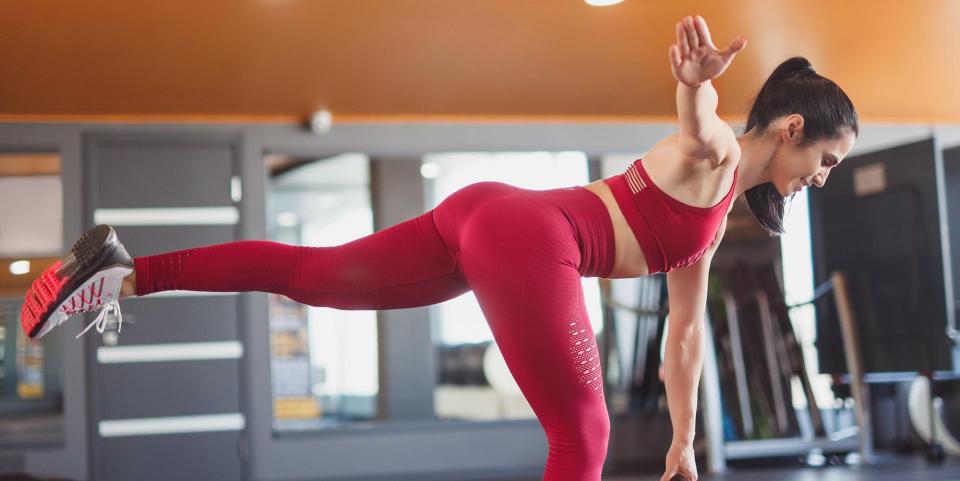5 single-leg deadlift mistakes you don't want to make

Whether you're a die-hard runner or strength training is your go-to, the humble single-leg deadlift has a lot to offer. Best part? You don't need any kit to reap the benefits of this hardworking move (unless you want to challenge yourself further - but more on that below).
Benefits of single-leg deadlifts
Aside from building muscle and strength in your hamstrings and glutes, single-leg deadlifts can also improve coordination and balance.
The unilateral focus (that's PT speak for working one side at a time) is also a bonus – unlike regular deadlifts, your weaker side won't be able to get away with carrying less of the load. For runners, unilateral leg-work like this is ideal, since running requires you to load one leg at a time with your entire body weight.
"Add weighted single-leg deadlifts into your exercise routine a couple of times a week to see benefits," says Claire Richardson, personal trainer and co-owner of F45 Holloway and F45 Blackhorse Lane. "You can even use them in your warm-up, without weights. It's a great way to fire up your lower-body muscles, including the hips, which tend to be tight."
What muscles do single-leg deadlifts work?
A single-leg deadlift strengthens your lower back, hamstrings (back of your thighs) and glutes – all important if you're chasing a new 5k PB.
Balancing on one leg also requires some stabilisation, so you'll work your core muscles, too.
How to do a single-leg deadlift
(a) Start with your feet together, with your hands on hips or at your sides. Shift your weight to your left leg, knee slightly bent.
(b) Hinge at your hips to bring your chest down while raising your right leg behind you until your body is in a line from your head to your right foot. Reverse back to the starting position and repeat (8 - 12 reps should do it) then switch sides.
How to do a single-leg deadlift with a dumbbell or kettlebell
(a) If you're adding a kettlebell or dumbbell into the mix, begin as above, but with the weight in your right hand. You can keep your left hand on your hip or hold it out to the side - whatever makes it easier for you to balance.
(b) Hinge at your hips to lower your chest down, while raising your right leg straight out behind you. As you hinge, lower the weight down towards the floor. Reverse back to the starting position, and repeat on this side before switching over. Remember: your weight goes in the opposite hand to the planted leg.
"If performed correctly, most people should feel comfortable performing this move," says Richardson. If you struggle with balance or have back issues then you might want to take it slow.
Form mistakes to look out for
1. You're arching your back
As with all hip-hinge movement, you'll need to keep your core engaged and back flat to prevent straining your lower back.
2. You're rounding your shoulders
It's easy to fall into this form trap, especially when you're adding weights into the mix. Think about drawing your shoulder blades back and down.
3. You're straining your neck
What are you looking at? Don't crane your neck to keep looking upwards as you bend forwards. Keep your neck neutral to allow your gaze to follow the path of your movement, so you end up looking at the floor as you lower your torso.
4. You're bending your knees
Repeat after us: this is not a squat. Keep your standing leg straight, but avoid locking out – you want a soft bend in the knee.
5. You're lifting your leg too high
This is not the time to show off how flexible you are – unless you fancy falling on your face. The ideal position here is to have your torso and lifted leg parallel to the floor. If you can't get that high, don't worry. Only go as far as mobility allows.
In need of some at-home inspiration? Sign up to our free weekly newsletter for skincare and self-care, the latest cultural hits to read and download, and the little luxuries that make staying in so much more satisfying.
Plus, sign up here to get Harper’s Bazaar magazine delivered straight to your door.
You Might Also Like

 Yahoo Finance
Yahoo Finance 